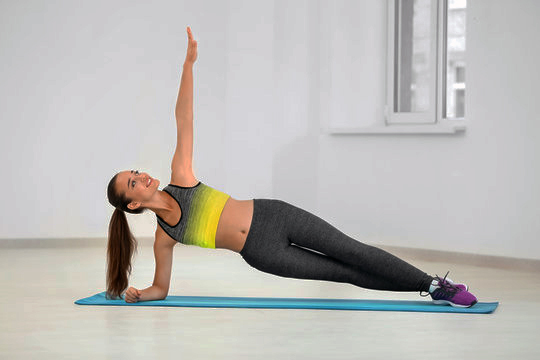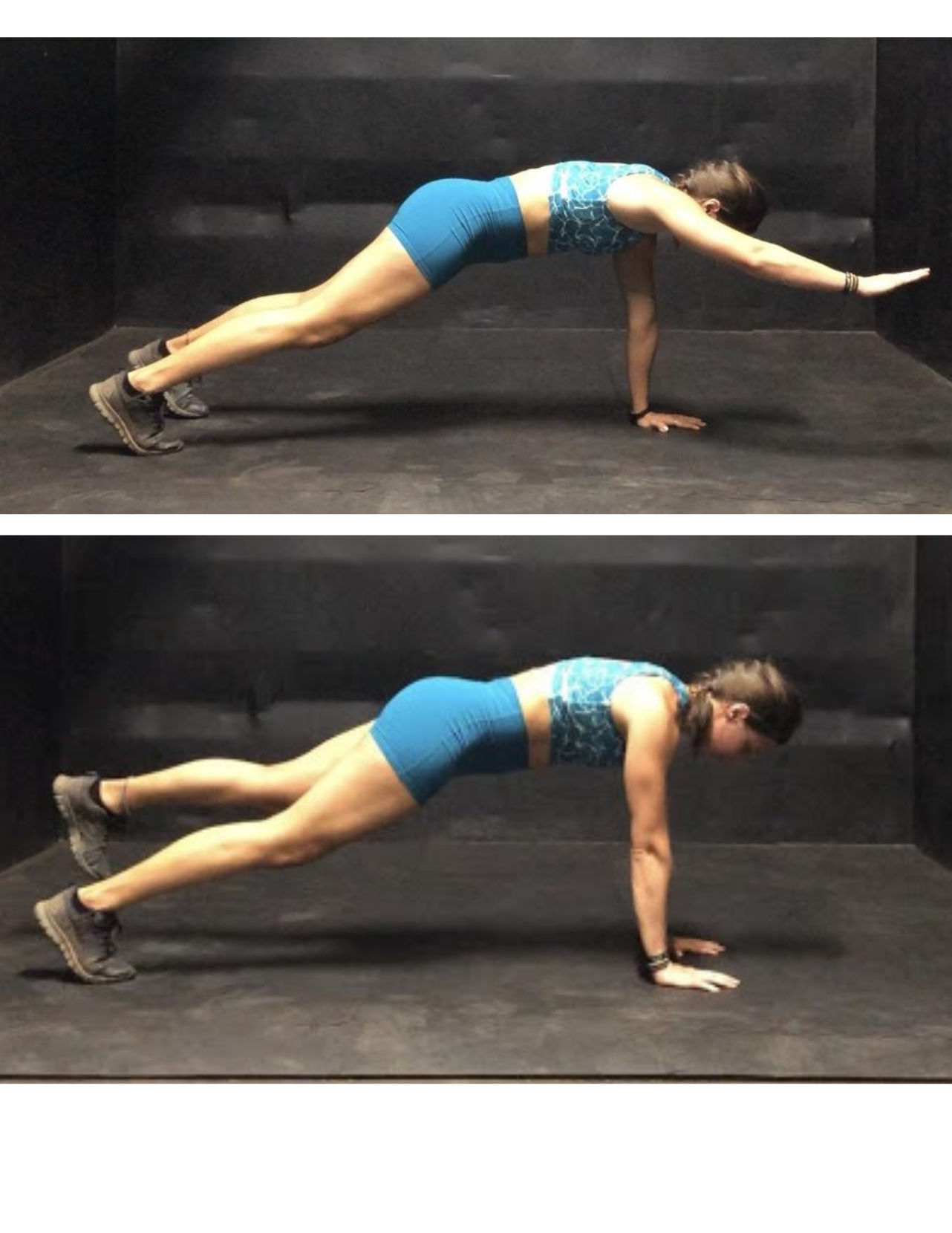
Tired of boring old planks?
In this article, we will explore various plank progression and regression, the benefits and drawbacks of each, and common mistakes to avoid. The plank exercise has become a popular core exercise among fitness enthusiasts and trainers alike. It is a simple, yet highly effective exercise that targets multiple muscle groups, including the abdominals, back, and shoulders. While the basic plank exercise may seem easy at first, there are several variations and progressions that can make it more challenging and effective.
On the other hand, some individuals may need to modify the plank exercise due to injury or weakness. This is where plank regression comes into play.
Contents
Regression of Plank
To perform the regression of plank, start in the push-up position on your knees and forearms. Keep your core engaged and hold the position for several seconds before resting. You can do consecutive bouts of shorter time (like 10-15 seconds) to accumulate “a set” then rest longer between sets.
There are several plank variations that can be combined to create a challenging and effective workout. Some examples include:

The side plank is a variation of the traditional plank exercise that targets the oblique’s, or side abdominals. However, some individuals may find it difficult to hold the side plank due to weakness or instability. This is where the side plank regression comes in.
To perform the side plank regression, start in the modified plank position on your knees and forearms. Then, while keeping your core engaged, lift one arm straight up and rotate your body towards that arm. Hold this position for several seconds before switching sides.

Start in the traditional plank position on your hands and toes. Then lift a single arm, a single leg or opposite arm and leg – holding for 1-2 seconds without losing your plank position. Repeat for several reps.

Start in the traditional plank position on your elbows and toes. Then, lift one arm straight up overhead, hold for several seconds, and switch arms. Repeat for several reps.
Several variations like a plank row, plank fly or plank rotation use weights to add variety and difficulty to the exercise!

Give some of other variations a shot!
The goal is always the same regardless of the variation: KEEP THE SPINE &/OR PELVIS STABLE.
🔹Plank Reach: Reach the arm out in front of you without moving the body.
🔹Plank Leg Lift: Lift a leg up an inch off the floor and don’t let the hip drop
🔹Plank Row: Horizontal Db Row without allowing the hips to shift
🔹Plank Pullthrough: Drag the weight through without allowing hips to move or weight to shift
🔹Plank Birddog: Lift opposite arm & leg at the same time
Most of these can be done on your knees or toes with bands or cables.
Save these for your next workout and Let me know which is your fav!
If you are looking to challenge yourself and take your plank exercise to the next level, the planking challenge is for you. This exercise involves holding the plank position for a set amount of time, usually starting at 30 seconds and working up to several minutes.
To perform the planking challenge, start in the traditional plank position on your hands and toes. Hold this position for as long as possible, taking breaks as needed.
A plank progression plan is a structured workout program designed to help individuals gradually improve their strength and endurance in the plank exercise.
Starting with whatever variation is accessible to you:
A plank training program is a comprehensive workout program designed to improve an individual’s strength and endurance in the plank exercise. This type of program typically includes a variety of plank exercises, variations, and modifications, along with other exercises to complement the plank and target different muscle groups.
Starting with whatever variation is accessible to you:
WEEK 1: Hold 30 sec 2-3x per day (or accumulate)
WEEK 2: Hold 45 sec 2-3x per day (or accumulate)
WEEK 3: Hold 60 sec 2-3x per day (or accumulate)
WEEK 4: Increase difficulty with variation & work your way back through time progression from week 1!
While plank progression and regression can both be effective ways to modify the plank exercise, it is important to understand the difference between the two. Progression are intended to make the exercise more challenging and require more strength and stability. Regression, on the other hand, are intended to make the exercise easier and more accessible for individuals who may have limited mobility or strength.
It’s critical to select the version that best suits your fitness level and objectives. If you are just starting out, it may be best to start with a regression and gradually work up to a progression as you build strength and stability.
The plank is a low-impact exercise that can be done anywhere with no equipment needed. It’s great for building core strength and stability, improving posture, and reducing the risk of injury.
The plank can be challenging for beginners and may not provide enough resistance for advanced athletes.
When doing the plank exercise, people frequently make a number of blunders. They consist of:
Plank exercises are an excellent way to strengthen your core and improve your overall fitness level. However, not everyone can perform a full plank, and that’s where plank regression comes in. These variations are designed to help beginners get started with the plank exercise and progress to more advanced levels gradually.
Remember to start with a simple exercise and gradually progress to more advanced levels. Also, be sure to avoid common mistakes, such as arching your back, holding your breath, and sinking your shoulders. With proper technique and consistency, you’ll be able to perform a full plank in no time!
It is recommended to perform plank exercises at least 2-3 times a week for optimal results. However, you can also incorporate them into your daily workout routine if desired.
The average time for a standard plank hold is about 30-60 seconds, but it varies depending on factors such as fitness level, age, and body composition. Beginners may find it difficult to hold the position for more than a few seconds; while more experienced individuals may be able to hold it for several minutes.
The number of plank reps you should do depends on your fitness level and goals. Beginners may start with 2-3 sets of 10-20 seconds each and gradually increase the duration as they progress. Advanced athletes may aim for longer holds, up to 3 minutes or more, or perform more challenging variations.
The plank exercise is a full-body workout that primarily targets the core muscles, including the abs, lower back, and hips. Consistent practice of plank exercises can improve core strength, stability, posture, and balance. Additionally, it may also help to reduce the risk of lower back pain and injury.

Women’s Functional Nutritionist & Fitness Specialist along with CEO of Elysian Women’s Wellness.
God, family, fitness – in that order. Fitness isn’t my job, it’s my passion. My favorite things include traveling the world, being a mama and making a difference.
14 years of experience in the wellness industry has brought me to an understanding that when you’re ready – you’ll do it. So when you are, we’re here to keep you simply well.
The last “program” you’ll ever buy. Your individualized training & nutrition plan that teaches the why & how to create lasting changes with me by your side every step of the way!

Error: No feed found.
Please go to the Instagram Feed settings page to create a feed.
Level 0, 1, 2 & 3: Level Up your workouts with beginner to advanced plans designed with a focus lift each month, progressive overload, instructional videos & all inclusive training & nutrition guides.
Copyright ©2025. Gamechanger
A BRANDT CREATIVE CO. TEMPLATE. Trusted by Wimgo.